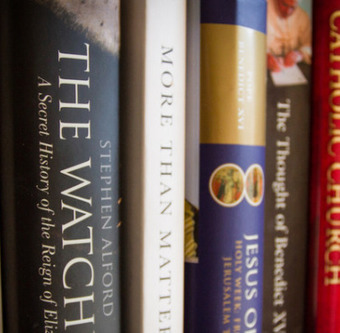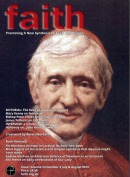
Book Review: A voice of hope
Article:
01.07.18
Faith Finding A Voice, Cardinal Vincent Nichols, Bloomsbury, 224pp, £17.99 (hardback), £11.69 (paperback).
reviewed by Pia Matthews
Cardinal Nichols’ new book, Faith Finding A Voice is a natural extension of his earlier book Hope In Action (2017), and it weaves new writing in with previous material from his homilies, lectures and speeches. If only one word was available to sum up the riches of this new book, then that word would be hope. Not of course hope as optimism, but theological hope. Theological hope is realistic about the true state of affairs in the world and our society, but it also is a natural passion for and a striving towards a future good. Hope is a spur to action and it directs us towards God. Hope sees all things in the perspective of the kingdom.
Action and thought
Nichols wants to challenge his readers in two ways: in action and in thought. He explains that the context for this challenge comes out of his reflection on Evangelii Gaudium, the 2013 Apostolic Exhortation of Pope Francis on the joy of the Gospel and evangelisation. The influence of the Pope’s exhortation can be seen in some of the themes chosen by Nichols. The Pope talks of sharing the joy of the gospel and the Church’s mission in the light of challenges in the modern world. The Pope considers in particular the social dimension of evangelisation in terms of peace, the common good and dialogue, and the formation of spirit-filled evangelizers. Similarly Nichols picks up on social questions, on the search for justice, peace and the common good, dialogue especially inter-faith dialogue, and the formation of evangelizers through education for life, and through the ministries of the people of God whether lay, clerical or living a consecrated life.
A listening heart
However it is significant that from start to finish Nichols gives his book a Trinitarian feel. Indeed, all the current realities that Nichols explores are placed within a Trinitarian dimension. This is important to note. Nichols recognises the necessity of studying subjects such as politics, law and sociology in order to understand the world and find a basis for action: this is part of the project to develop ‘a listening heart’. Nevertheless, as he points out, reason and faith work together. The true reality is to allow Christ to be born is us every day so that we act for him. The acknowledgment that action is first and foremost God’s work rescues social action from simply doing good. And action that is God’s action can never be in vain.
Trinitarian focus
This Trinitarian focus is found in the structure of the book and in one of the inspirations for Nichols: the altarpiece of the Nativity with Saints by the fifteenth century artist Pietro Orioli (the cover of the book only shows the main painting without its predella, but the complete altarpiece appears in one of the illustrations in the middle of the book). In Part One Nichols treats of the mystery of God revealed as Father, Son and Spirit. Chapter 1, The Lure of God, reflects on the attraction of God that is a call to meet God both in the silence of our inner life and in our grace-filled action for the kingdom. Tellingly Nichols adds that this is not a striving for an experiential knowledge of God for its own sake, rather it is so ‘we may be filled with his Word and be changed’.
In Chapter 2, The Mystery of Christ, Nichols uses art to refresh our often wearied approach to public life as he gives his extended reflection on the Orioli altarpiece in conjunction with thoughts from Elaine Parsons and Father Richard Parsons. Once again this is a Trinitarian reflection on art, beauty, salvation and living in the world where all events and the saints are under the watchful gaze of the Father. The fact that this is an altar piece serves as an opportunity for Nichols to reflect on his own priestly experience. Chapter 3, The Holy Spirit: Community and Creation, continues with Orioli’s picture and the making of missionary disciples who are not only open to hope and new possibilities but also open to the working of the Spirit. Nichols draws on Pope Francis’ encyclical Laudato si to call attention to the glory of God in the world and our ethical tasks of protecting creation and promoting the dignity of all.
Radical view of education
If Part One is a meditation on God’s work in our inner life, the three chapters of Part Two prepare us to be missionary disciples. Drawing on personal experience Nichols shows his keen interest in education where the goal is to form people who appreciate their uniqueness, who are independently minded and confident and who have an awareness of community, justice, tolerance and dialogue. Here, rather than being a restriction, faith plays a significant role in helping people to become not better consumers or people unencumbered by others, but people who are in relationship with the world, with others and with God. As Nichols sees it, true education helps us realise that our identity and dignity as human beings rests on our sense of self-transcendence.This leads to what Nichols calls a radical view of education which relies on developing the virtues and is at the service of the common good, committed to the flourishing of all, and respectful of human dignity. Faith finds a voice especially in universities where people are encouraged to engage with others and to listen to the ‘heartbeat’ of the age with faithfulness to the Word as expressed in scripture, tradition and the magisterium.
Regenerating the mercy of God
The four chapters of Part Three develop the themes of the sacredness of our Christian heritage, the promotion of religious freedom, and the way in which inter-religious dialogue can connect to a shared spiritual and ethical quest while at the same time respecting each religion’s own specific character. In particular Catholic social teaching fed by prayer and the Eucharistic community, becomes a vision for hope as Christians act as a conscience for society that is in need of redemption. In Part Four Nichols looks specifically at Catholic identity: through the papacy, the episcopate, the presbyterate, the diaconate, the consecrated life and the people of God. Nichols sees in each of these areas of life our mission together as Church, a mission that arises from divine communio in the Trinity, and that has its origin in prayer and contemplation of scripture. He understands the corporeal and spiritual works of mercy as practical ways to re-establish and regenerate the mercy of God’s ordered creation.
Ultimately, he says, the evangelizing mission can be expressed in terms of the divine mercy of God who draws all of broken humanity to him. As Nichols explains, we are not created for futility. Every person has a destiny and since the hope for humanity is based on the victory of Christ, this hope will not be in vain. Faith finding a voice is a voice of hope.
Notes:
Dr Pia Matthews lectures at St Mary’s University, Twickenham and St John’s Seminary, Wonersh.





